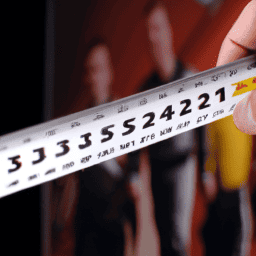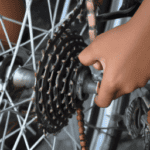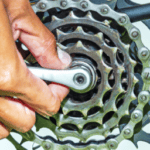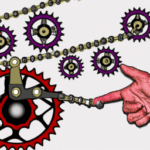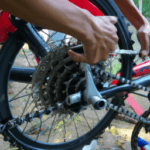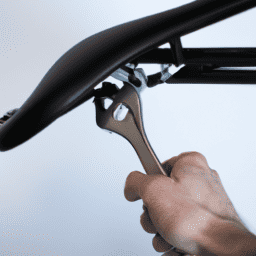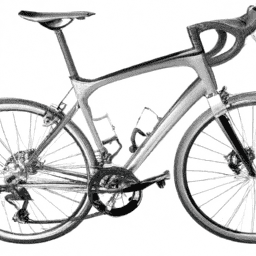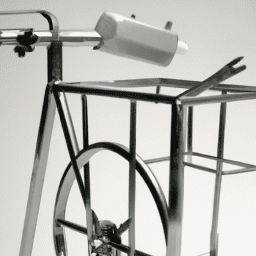Are you having difficulties changing gears on your bike? Fed up with your chain slipping or hearing that harsh grinding sound from your gears? It might seem daunting to adjust your gears, but with a bit of understanding and some practice, you can handle it on your own.
In this article, you will learn how to assess your gears, adjust the barrel adjuster, adjust the limit screws, and test ride your bike to ensure everything is working properly.
Before you start adjusting your gears, it’s important to assess the current state of your bike. Look for any obvious issues such as a bent derailleur hanger or a damaged chain. Make sure your bike is clean and free of debris, and that your cables and housing are in good condition.
Once you have assessed your bike, it’s time to start adjusting your gears. By the end of this article, you will have the knowledge and confidence to make your bike shift smoothly and effortlessly.
Key Takeaways
- Assess the current state of the bike before adjusting gears by shifting through all gears while pedaling to evaluate performance.
- Cable tension and derailleur hanger can cause shifting problems, but the barrel adjuster can fine-tune shifting by controlling cable tension.
- Limit screws control derailleur movement to prevent overshooting.
- Test ride the bike to ensure adjustments are working correctly after making changes to the gears.
Assess Your Gears
Now, let’s take a moment to assess your gears and make sure they’re working properly for a smooth ride.
To evaluate the performance of your gears, shift through all the gears while pedaling, both up and down. Observe if the chain moves smoothly and the shifting is quick and precise.
If you notice any issues with your gears such as skipping or hesitation when shifting, you might need to identify the problem before making adjustments. One common issue you might encounter is cable tension. If your gears aren’t shifting smoothly, it could be due to too much tension or slack in the cable.
Another possible problem is the derailleur hanger; if it’s bent or damaged, it can cause shifting issues. Once you’ve identified any issues with your gears, you can move on to adjusting the barrel adjuster to fine-tune your shifting.
Adjust the Barrel Adjuster
Like a musician tuning their instrument, you can fine-tune the shifting of your bike by tweaking the barrel adjuster. The barrel adjuster is a small knob located on the derailleur. It controls the tension of the cable, which in turn affects the position of the derailleur and the gear shifting.
Common issues with the barrel adjuster include difficulty shifting into certain gears, or the chain slipping off the gears. If you’re experiencing these issues, try turning the barrel adjuster clockwise or counterclockwise in small increments. If you turn it too much in one direction, the shifting may become even worse. So, be patient and make small adjustments until you find the sweet spot.
Troubleshooting tip: if you’re not sure which direction to turn the barrel adjuster, shift to the smallest gear in the back and turn it counterclockwise until the chain starts to make noise. Then, turn it clockwise until the noise stops. This should put you in the right ballpark.
Once you’ve adjusted the barrel adjuster, move on to adjusting the limit screws to ensure your bike is shifting smoothly.
Adjust the Limit Screws
To get your bike shifting smoothly, you’ll want to make sure those limit screws are set correctly. Limit screws control the movement of the derailleur and prevent it from shifting too far in either direction. If they are not set properly, your bike will have trouble shifting, or may even shift the chain off the gears altogether. Here’s how to adjust the limit screws:
| Low Limit Screw | High Limit Screw | |
|---|---|---|
| Fine tuning technique | Shift to the smallest cog in the rear and largest chainring in the front. Turn the low limit screw clockwise until the jockey wheel is aligned with the cog. Shift to the largest cog in the rear and smallest chainring in the front. Turn the high limit screw clockwise until the jockey wheel is aligned with the cog. | Shift to the largest cog in the rear and smallest chainring in the front. Turn the low limit screw counterclockwise until the jockey wheel is aligned with the cog. Shift to the smallest cog in the rear and largest chainring in the front. Turn the high limit screw counterclockwise until the jockey wheel is aligned with the cog. |
| Common mistakes | Turning the limit screw too far can cause the derailleur to overshoot the cog and shift the chain off the gear. Make small adjustments and test the shifting between each adjustment. | Turning the limit screw too far can cause the derailleur to overshoot the cog and shift the chain off the gear. Make small adjustments and test the shifting between each adjustment. |
Remember to make small adjustments to the limit screws and test the shifting between each adjustment. Once you have fine-tuned the limit screws, it’s time to move on to the next step: the test ride.
Test Ride
Get ready to experience the smoothest ride of your life as you take your bike for a spin to test the adjustments you’ve made. Sit up straight with proper posture and start pedaling, shifting gears smoothly as you go.
As you ride, keep in mind these two things:
-
The joy of a well-tuned machine: As you shift gears with ease, feel the satisfaction of a bike that responds perfectly to your every move. Enjoy the feeling of freedom that comes with knowing your bike is performing at its best.
-
The importance of test riding before adjusting gears: Taking your bike for a test ride is crucial to make sure the adjustments you’ve made are working correctly. By test riding, you can fine-tune your gear shifting technique and ensure your bike is performing optimally.
Remember to take note of any issues you encounter during your test ride, and make any necessary adjustments.
In the next section, we’ll discuss some maintenance tips to keep your bike running smoothly.
Maintenance Tips
Maintaining your bike is crucial for keeping it in top condition and ensuring a smooth ride every time you hit the road. One important aspect of maintaining your bike is keeping the gears in good working order. To do this, you need to keep your bike clean and well-lubricated.
Cleaning your bike is essential to keep it running smoothly. Dirt and grime can build up on the gears, causing them to wear down faster and not function properly. Use a soft brush or cloth to remove any dirt or debris from the gears and chain. A degreaser can also be used to help break down any built-up grease or oil.
Once the gears are clean, make sure to dry them thoroughly before applying lubrication. Lubrication is critical to keep the gears running smoothly. Use a high-quality lubricant specifically designed for bike gears. Apply the lubricant sparingly to the gears, making sure to cover all moving parts. Excess lubricant can attract dirt and cause the gears to become clogged, so it’s important to apply only as much as necessary.
Regularly cleaning and lubricating your bike’s gears will help keep them in good working order and extend their lifespan.
Frequently Asked Questions
What is the most common cause of gears slipping on a bicycle?
The most common cause of gears slipping on a bicycle is wear and tear on the chain and cassette. Preventative maintenance includes checking chain wear and troubleshooting techniques involve adjusting the derailleur limit screws.
Can a worn chain affect the performance of the gears?
Yes, a worn chain can negatively impact the performance of your gears. Replacing the chain regularly can help maintain optimal gear shifting. Consider upgrading your drivetrain if you frequently experience gear slipping or chain skipping.
How often should I replace my bike’s cables and housing?
Your bike’s cables and housing should be replaced when they show signs of wear and tear. Using high quality cables and housing offers benefits such as smoother shifting and increased durability. Choose technical, precise replacements.
What should I do if my gears are making a clicking or grinding noise?
If your gears are making a clicking or grinding noise, troubleshooting tips include checking cable tension, derailleur alignment, and worn chain or cassette. Common mistakes include improper cable routing or shifting technique.
Is it possible to adjust the gears on a single-speed bike?
"Sorry, but you can’t adjust gears on a single-speed bike. But don’t fret, because there are plenty of benefits to riding one. Popular single speed bike brands include State Bicycle Co. and Pure Cycles."Remember, "simplicity is the ultimate sophistication."
Conclusion
Congratulations! You’ve successfully adjusted the gears on your bicycle. With a little patience and attention to detail, your bike will shift smoothly and efficiently on your next ride.
But just like any other machine, your bike requires regular maintenance to keep it running smoothly. Make sure to clean and lubricate your chain regularly, and keep an eye on your cables and housing for signs of wear.
By taking care of your bike, you’ll ensure that it continues to perform at its best for years to come. Think of your bike as a well-oiled machine, just like a car. With regular maintenance and adjustments, it will run smoothly and efficiently.
But neglect it, and you’ll find yourself struggling to make it up even the smallest hills. So take the time to care for your bike, and it will reward you with a smooth and enjoyable ride every time.
Happy cycling!

